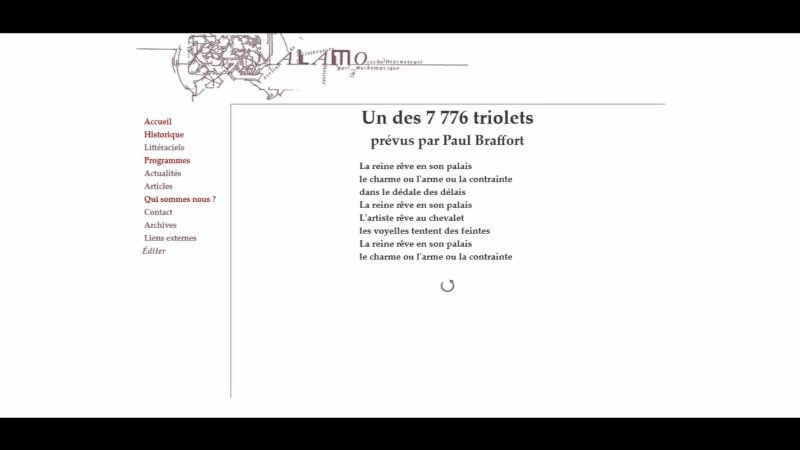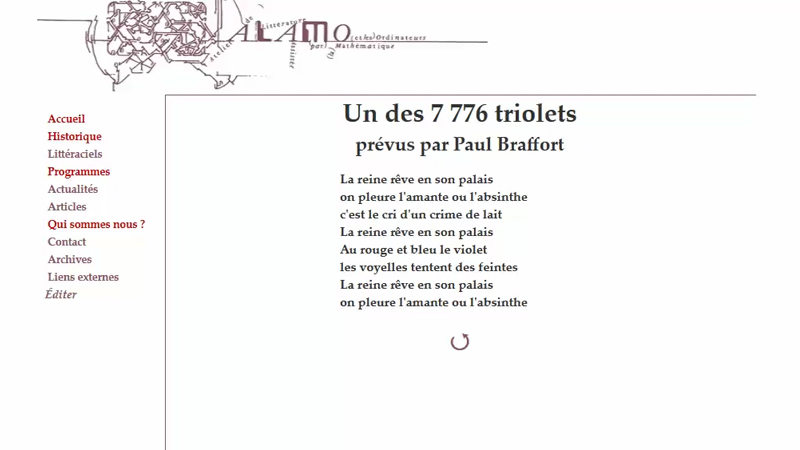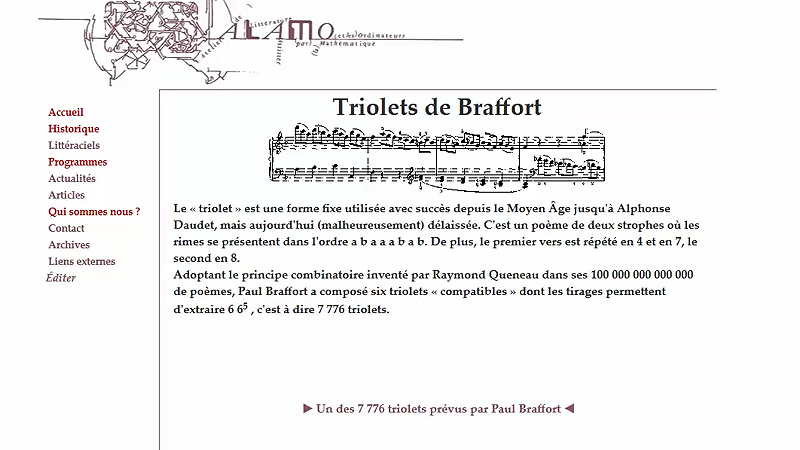"In the Oulipian tradition of combinatorial works --- after Raymond Queneau's Cent mille milliards de poèmes, in which the 14 lines from 10 sonnets, constructed with the same sets of rhymes, can be exchanged to produce one hundred thousand billion unique sonnets --- Paul Braffort's Triolets generates 7,776 unique triolets from the six compatible examples that he composed. The triolet, a French poetic form from the Middle Ages, consists of a poem of two stanzas with the rhyme scheme a-b-a-a a-b-a-b. As an additional constraint, line 1 is repeated at lines 4 and 7, and line 2 is repeated at line 8. In the generated triolets, the repeated lines are correctly preserved. This more intricate verse structure thereby benefits from the computational form over the original paper presentation of Queneau's work. In the translation, the rhyme scheme is preserved such that with some variations in pronunciation (e.g., ballet as BA-let) all outputs are valid triolets. This also required the alteration of some place names to preserve as much as possible the sense of the original French. Metrically, however, the French remains more pleasing and euphonous." -- from Electronic Literature Collection, Volume 3
1 COPY IN THE NEXT
The Electronic Literature Collection Volume 3
Published in 2016 by Electronic Literature Organization.
The ELO gave this copy of the work to the Electronic Literature Lab in 2018.
PUBLICATION TYPE
Anthology
COPY MEDIA FORMAT
Web


